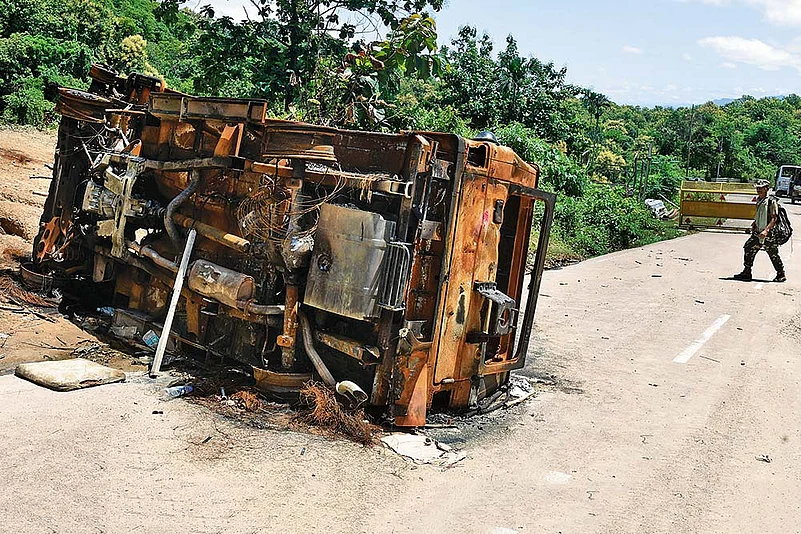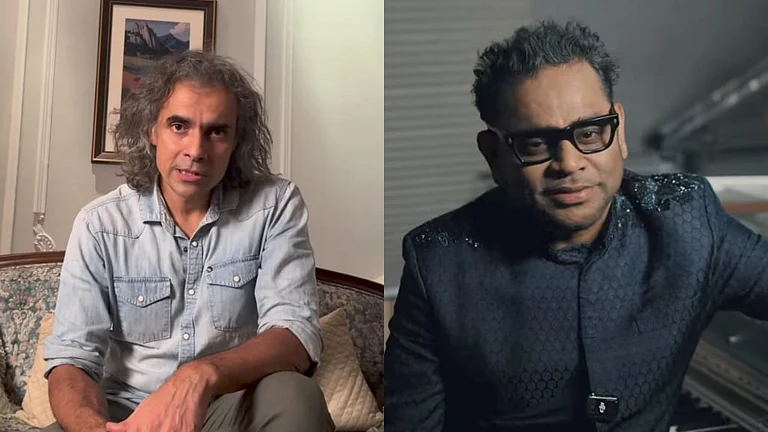Along a stretch of forested area on the Assam-Mizoram border, life is back to normal. Well almost. The guns have fallen silent. The armed police forces of both states have fallen back and a ‘neutral force’—CRPF—has taken over. Both states are talking reconciliation. But peace could be a façade here. Beneath the lush green forest and fertile land, the embers remain. A raging fire might yet burn another day. Just like the violent face-off between the two neighbours in the Northeast in July-end that left six Assam Police personnel dead and more than 40 injured on both sides. A decades-old boundary dispute flaring up and pushing the entire region into a vortex of chaos, confusion and distrust.
Both states accuse each other of being guilty of sparking the unrest. Assam chief minister Himanta Biswa Sarma claimed the policemen were killed while defending the state’s constitutional boundary at Lailapur in Cachar district. Mizoram home minister Lalchamliana said it was only a spontaneous reaction by the state police after a large contingent of Assam Police “forcibly crossed” a post manned by the Central Reserve Police Force (CRPF).
Over the week following the July 26 violence, both states hardened their stands, filing cases against each other, booking none other than Sarma, Mizoram Rajya Sabha MP K. Vanlalvena and a host of senior police and civil officials. What took the cake, however, was the Assam government issuing a travel advisory asking its citizens not to venture into Mizoram and those residing in the hill state to exercise caution. Speaking of the firing by Mizoram Police using light machine guns, Sarma said it was as if two countries were at war.
The ice finally began to thaw on August 1 when Union home minister Amit Shah stepped in and had a word with Mizoram chief minister Zoramthanga and Sarma, inducing the former to announce his desire to settle the border dispute amicably. Sarma responded, saying Assam “always wants to keep the spirit of Northeast alive. We are also committed to ensuring peace along our borders”. Soon, the acrimonious exchanges on Twitter between them made way for posts more humane amidst a flurry of “goodwill gestures”—Assam withdrew the case against Vanlalvena, Mizoram buried its cases against Sarma and the other officials and then, Assam decided to send two ministers to Mizoram to hold a dialogue.
The stage was set, if only, for the two sides to thrash out a settlement of the border dispute hanging fire since Mizoram, then Lushai Hills district, was carved out of Assam as a Union territory in 1972. It attained full statehood in 1987. From here on, it is all about reconciling between two notifications of 1875 and 1933 delineating the boundary. Assam and Mizoram share a 165-km-long boundary.
In its first meeting after being constituted on July 23, the Mizoram Boundary Committee on July 30 said it would only go by the 1875 notification issued by the then British administration to demarcate then Lushai Hills from the plains of Cachar. In 1933, the British divided the North again into separate districts along cultural, linguistic and tribal lines. This led to a new boundary separating Lushai Hills (Mizoram), Cachar (Assam) and present Manipur. As part of this trifurcation, some parts of Lushai Hills went to Manipur. The 1933 document formed the basis of the boundary of Mizoram when it was declared a UT and then a state. But Mizoram insists that its civil society was not consulted when the boundary was decided. Assam, on the other hand, will have none of it and insists on maintaining the boundary as it exists.

Oveturned vehicles at the scene of the gun-fight between Assam and Mizoram Police personnel.
And therein lies the problem. Who will blink first? Assam has border disputes not only with Mizoram, but also with Nagaland and Meghalaya, the two other states born out of it, besides Arunachal Pradesh. There have been skirmishes between Assam and the three states ever since they came into being.
The country’s disbelief over one state’s policemen firing on those of another might have been in place, but in the Northeast where all the seven states have some difference or the other with their respective neighbours—Tripura with Mizoram, Manipur with Nagaland—over territory, this was par for the course. One has to just revisit Merapani in Golaghat district of Assam where 28 Assam Police personnel were shot dead by their Nagaland counterparts in 1985. At least 13 civilians were also killed. Earlier, in 1979, at least 54 Assam villagers were killed by armed men from Nagaland in the same district and several thousand were displaced.
Joel Naga, president of the nascent Rising People’s Party in Nagaland, says Assam has to first withdraw its suit filed in the Supreme Court in 1988. “The Supreme Court in 2014 said it cannot arbitrate on the issue, but technically the matter remains sub judice,” he says. “The withdrawal of the suit will have to be the starting point for any negotiation. Assam may have issues with all the tribal states, but to be fair to them it must be said that it is a colonial legacy,” he concurs.

Noel also blames successive governments at the Centre for the imbroglio. According to him, the central government did not fully implement the 16-point agreement of 1960, which eventually led to the creation of Nagaland. According to it, about 30 reserved forests were to be transferred to Nagaland, but that never happened. Nagaland rejected the 1925 boundary demarcation, too. “Assam clings on to that and Nagas don’t accept,” Noel says. But he agrees that border disputes of the northeastern states have to be settled in the spirit of give and take. “We can’t stick to our guns.”
The BJP MP from Arunachal Pradesh, Tapir Gao, echoes Noel. “This cannot be allowed to go on any further, there are better things to do in the Northeast than keep on fighting among us,” he says. He blames the one-man Gopinath Bordoloi committee appointed by Nehru in 1951 for failing to clear the mess. “He did not consider the ground reality and had only conceptualised the issue,” he says. “It is a Congress legacy”.
A senior Assam government official rules out the possibility of any state giving up even a bit of its territory. “Our chief minister has already stated in unambiguous terms that not an inch of Assam land would be given away and neither would anybody else. So where does that leave us all?” he asks. Gao, however, reposes his trust on Prime Minister Narendra Modi to find a solution. A team of BJP MPs from the Northeast met Modi on August 2, pleading that he find a way out. “He assured us something will be done very soon,” Gao says.
Along the volatile interstate boundaries in the Northeast, ‘soon’ can take a while coming.
(This appeared in the print edition as "A Long, Winding Road To Peace")
By Dipankar Roy in Guwahati


























